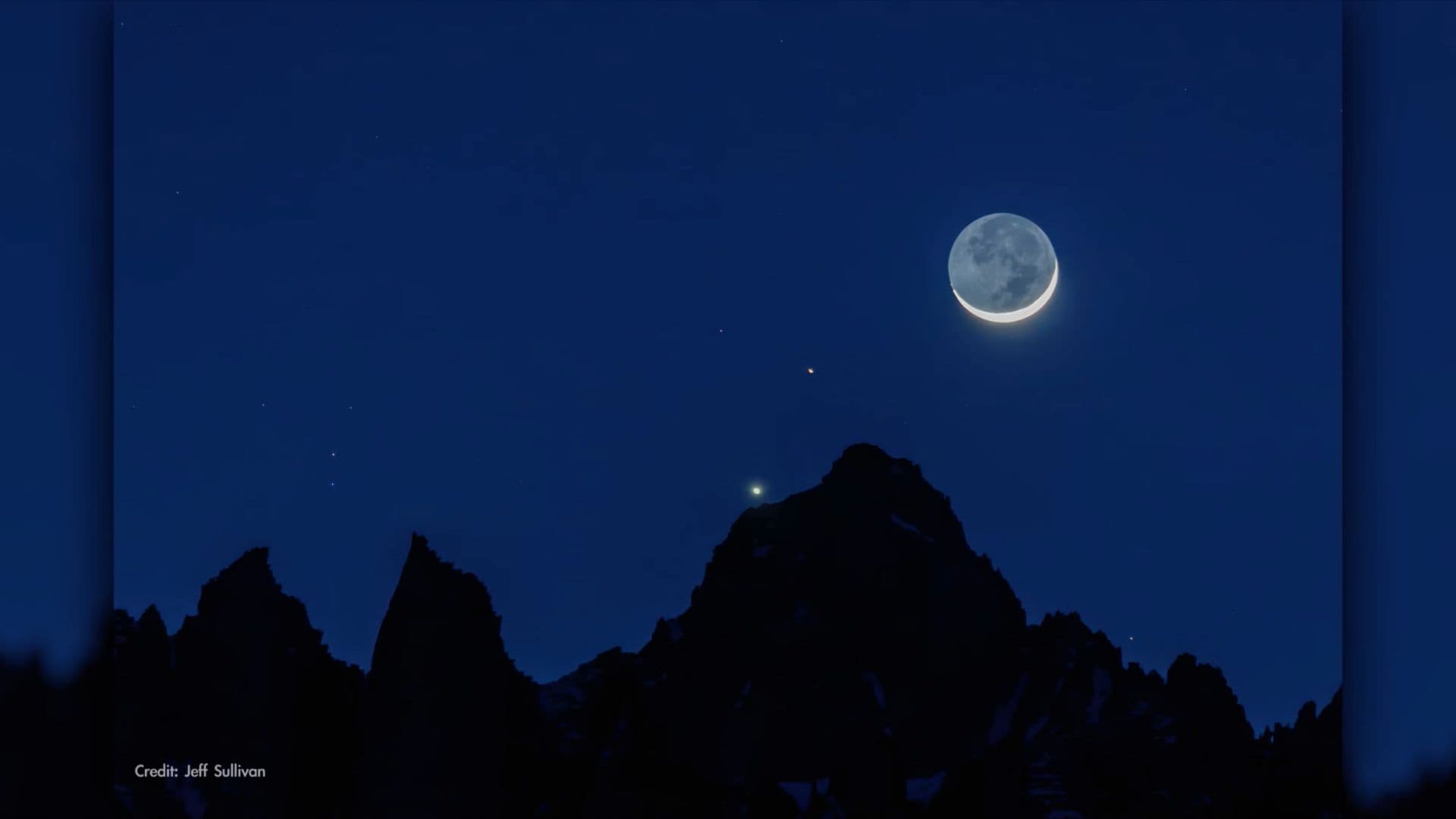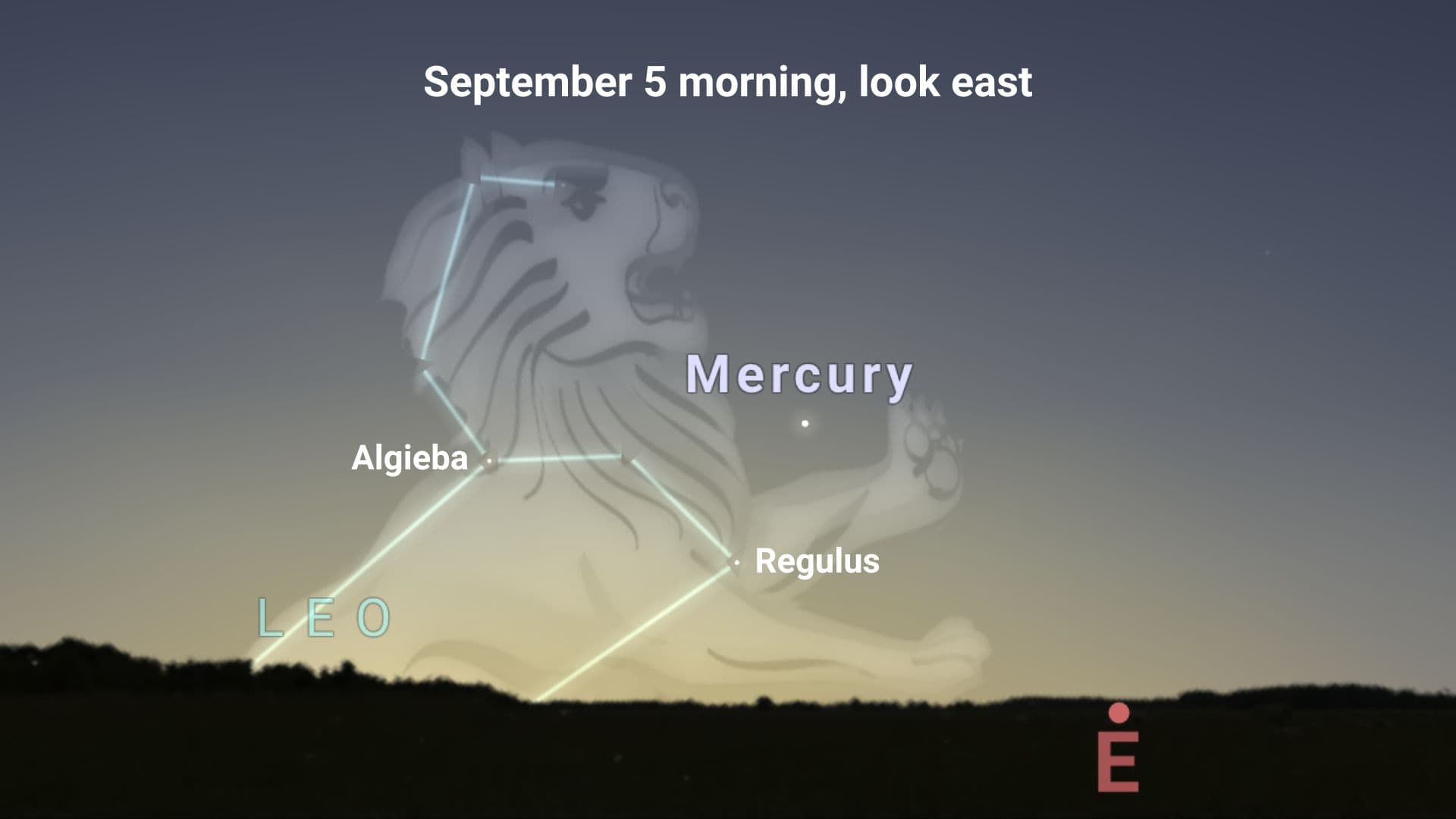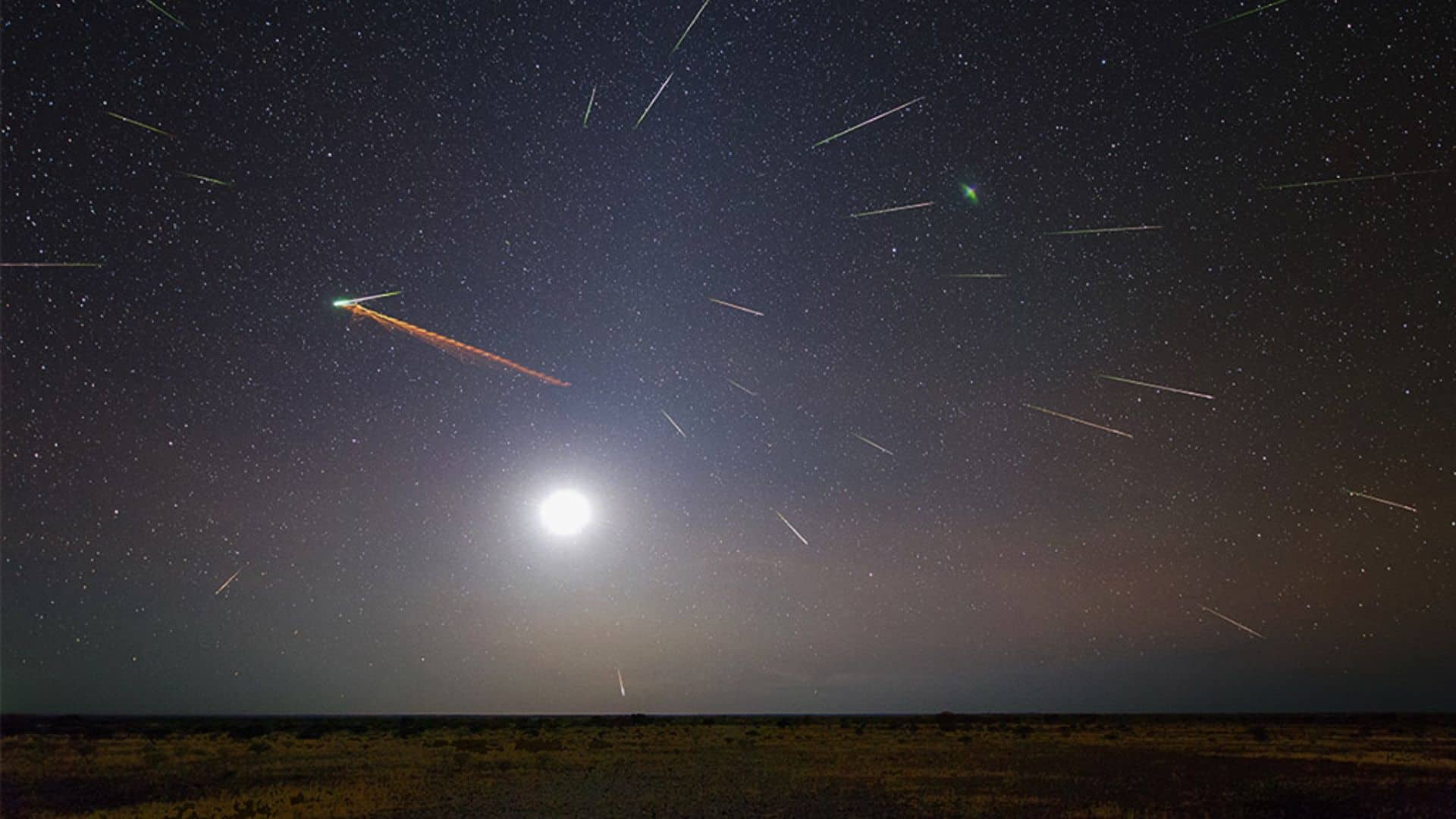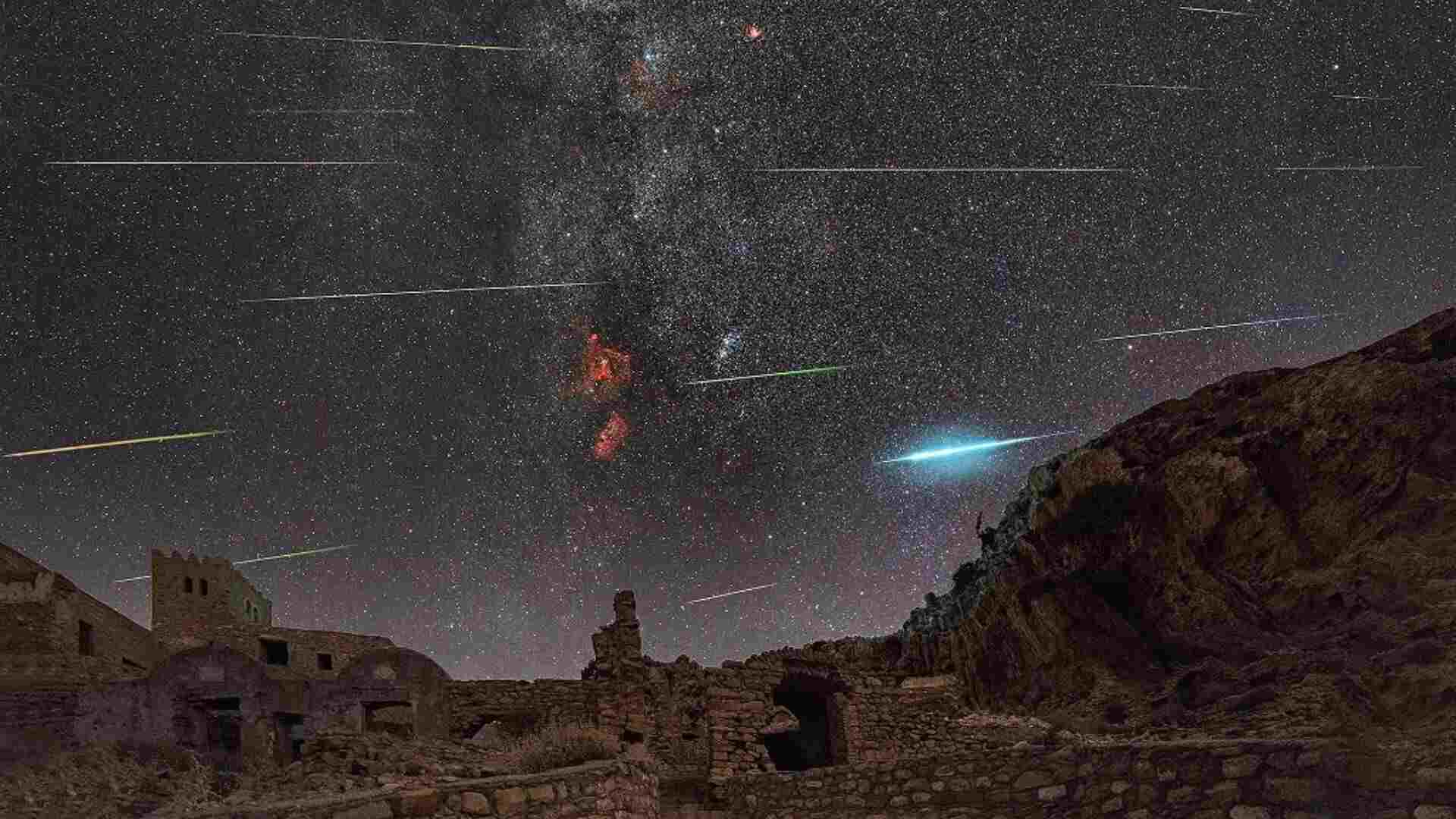Uranus at opposition in 2024 marks the best time to see Uranus in the sky in 2024.
Uranus at opposition
Planet Uranus at opposition, meaning it’s directly opposite the sun, as seen from the earth. So during the opposition, planet Uranus and the sun are located on opposite sides of the earth.
During the opposition, planet Uranus is visible all night under clear, dark skies as it rises in the east around the time of sunset, reaches its highest point (overhead point) in the sky around midnight and sets in the west around the time of sunrise.
So the opposition of Uranus marks the best time to observe the planet. More precisely, it signifies the middle of the best time of the year to observe the planet.
After opposition, planet Uranus disappears from the morning sky gradually as it rises four minutes earlier each day.
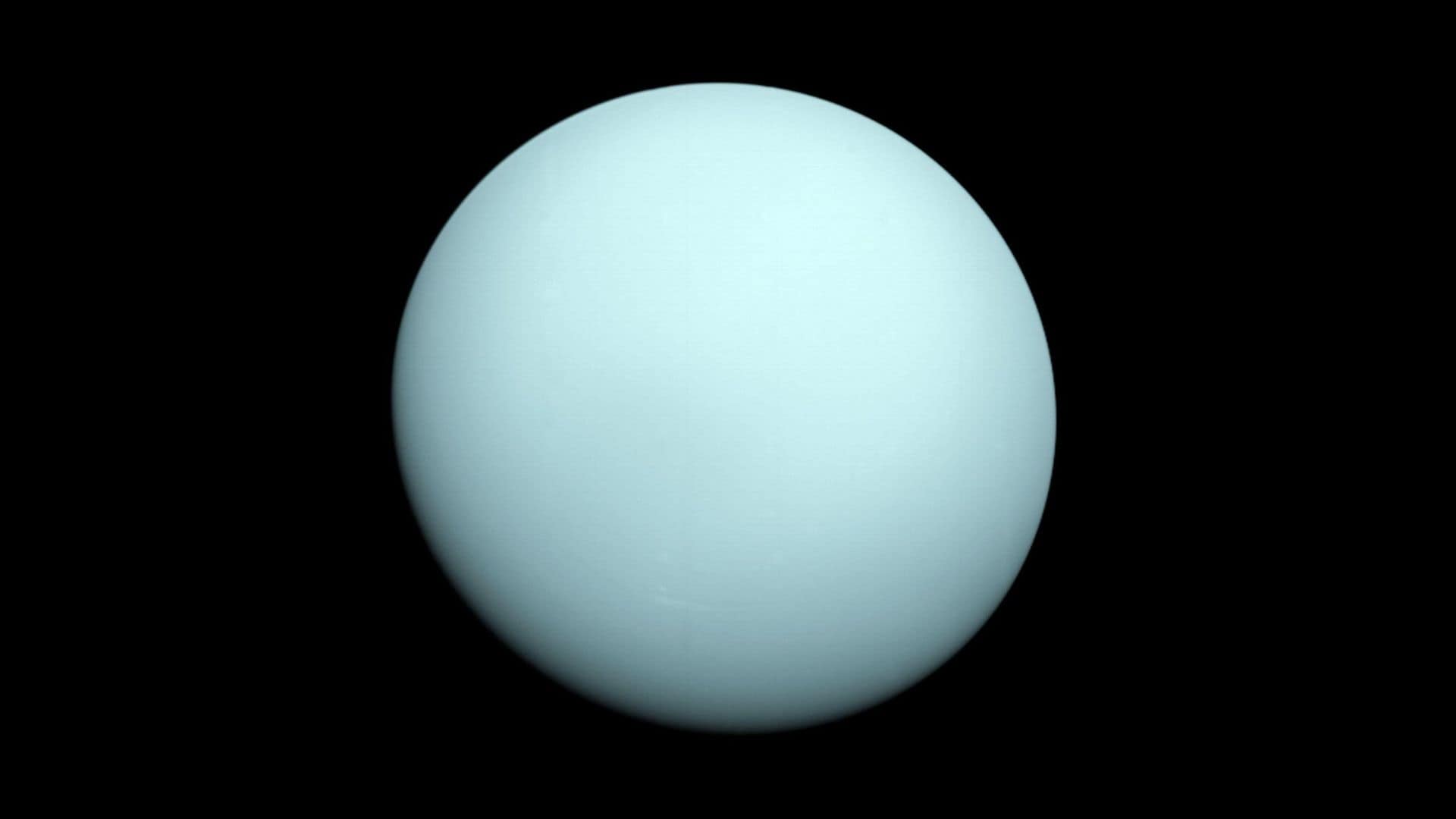
Uranus at opposition in 2024
Planet Uranus will reach opposition on Sunday, November 17, 2024, at 03:00 UTC (or Saturday, November 16, 2024, at 10 p.m. EST).
Magnitude (Brightness): During opposition, planet Uranus will shine with +5.6 magnitude, making it possible to see with an unaided eye if you have very good eyesight and are in a place with very clear and very dark skies.
Please remember that we can see up to +6.0 magnitude stars, planets, or astronomical objects under clear, dark skies.
Constellation: During opposition, the planet Uranus will be located in the zodiac constellation Taurus.
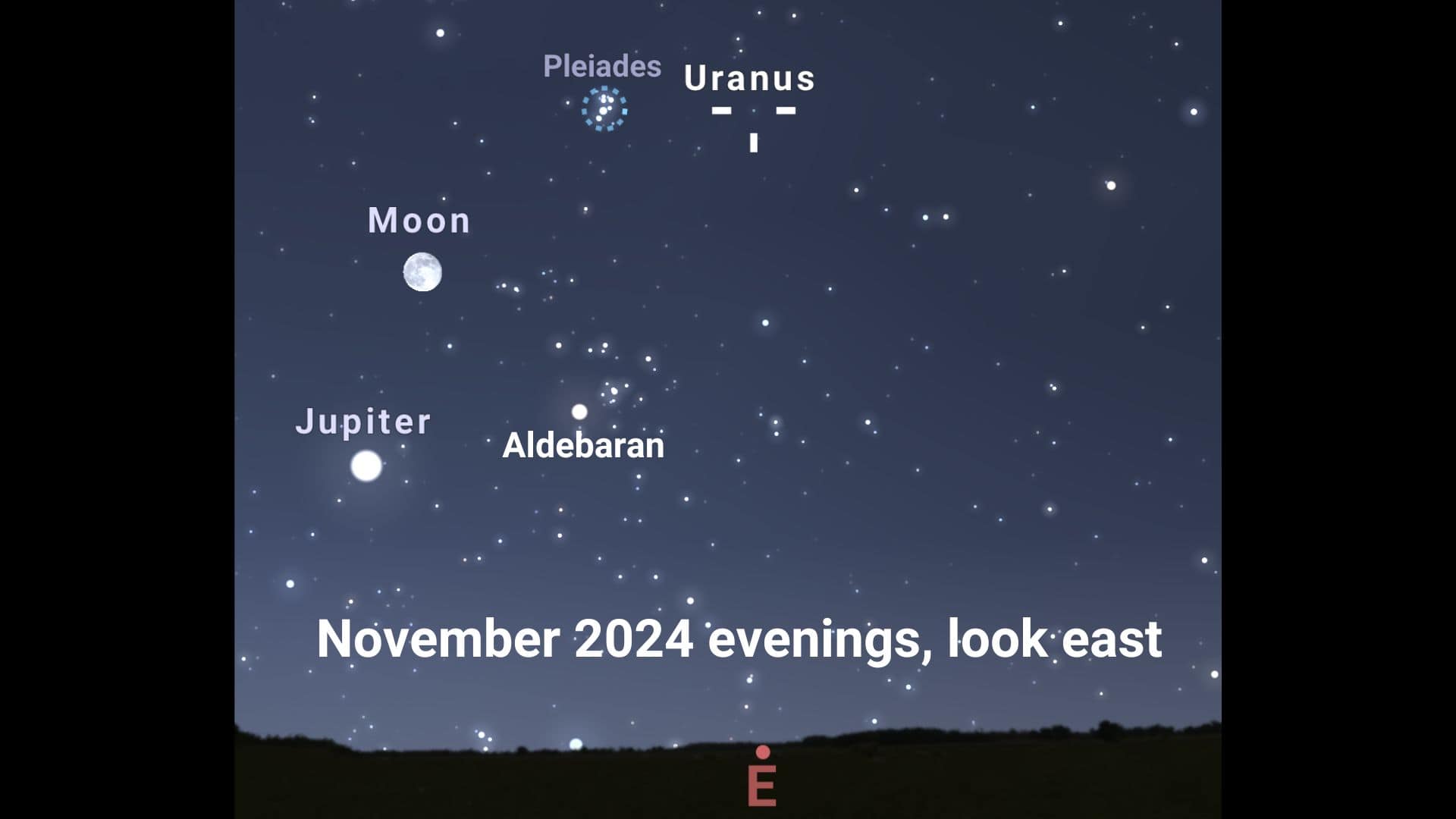
Where to look: Look low in the east around a couple of hours after sunset to see the planet Uranus. It is located very near and to the south of the Pleiades star cluster (M45).
How to watch: Uranus can be seen as a faint star when you see it with your unaided eye (naked eye). However, you need a telescope or a pair of good binoculars to see its blue-green hue.
Angular diameter (Disk size): During opposition, the angular diameter (disk size) of the planet Uranus is 3.8 arcseconds. You need a self-guiding, high-aperture telescope to see the disk of Uranus.
Distance: During opposition, the distance of the planet Uranus from the sun is 18.6 AU. One astronomical unit (AU) is the average distance from the sun to the earth. Uranus is the seventh distant planet from the sun.
The closest approach of Uranus to Earth
The closest approach of Uranus to Earth (also known as its perigee) for the year always falls on or near the date of Uranus’s opposition. So around the date of Uranus’s opposition, the planet appears the biggest and brightest for the year.
If the orbits of Earth and Uranus were perfectly circular, then the closest approach of Uranus and the opposition of Uranus would occur at the same time.
How often does Uranus reach opposition?
Uranus takes about 84 Earth years to orbit the Sun once. So when our Earth makes one full revolution around the Sun, Uranus travels 1/84 of the way around the Sun.
So to create an opposition to Uranus, our Earth would have to travel an extra 1/84 of the way in its orbit, which takes (1/84)*365 = 4.3 days to travel.
That’s why planet Uranus reaches opposition once every 1 year and 4 days.
Upcoming dates of Uranus at opposition
Here are all the upcoming dates of Uranus at opposition, according to NASA:
| Date | Time (UTC) |
|---|---|
| November 13, 2023 | 18:00 |
| November 17, 2024 | 03:00 |
| November 21, 2025 | 13:00 |
| November 25, 2026 | 23:00 |
| November 30, 2027 | 10:00 |
| December 03, 2028 | 21:00 |
| December 08, 2029 | 09:00 |
Please follow us on Facebook and Twitter to get latest space news, upcoming skywatching events and astronomy-related content.
